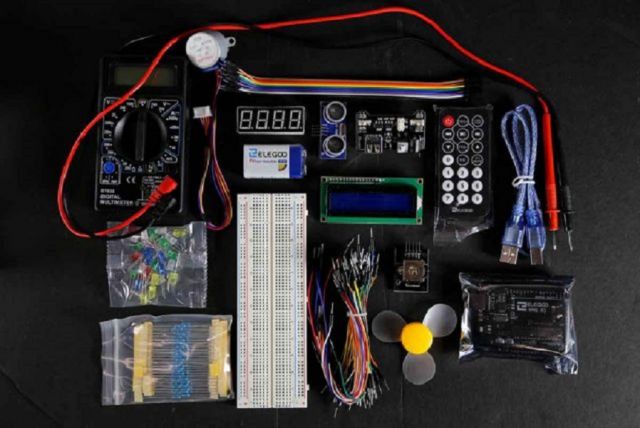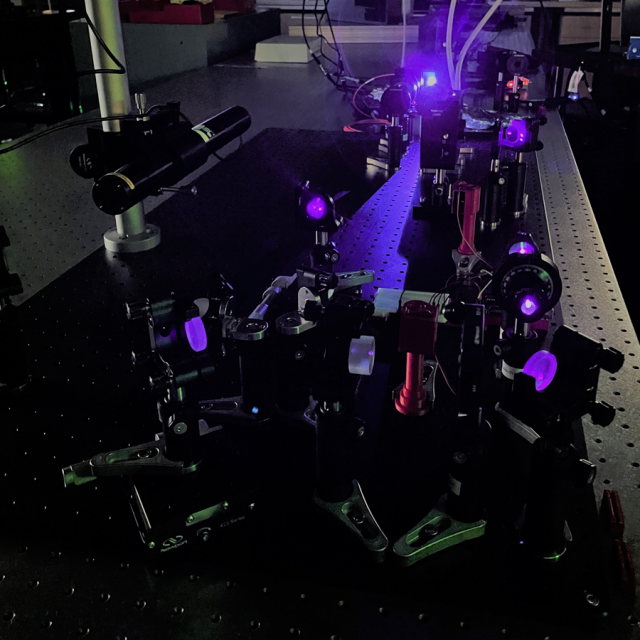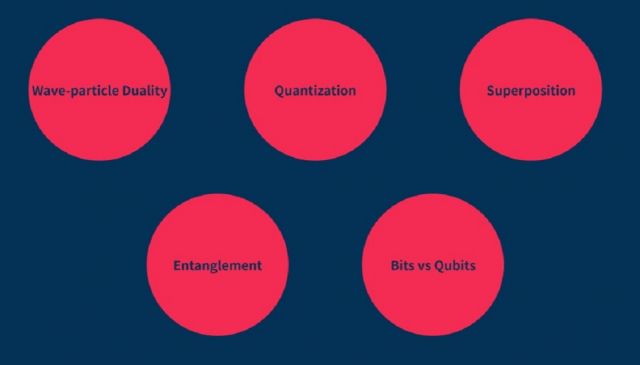
UCSB's ECE 10-Series: An introduction to analog and digital circuits. I teach ECE10C/10CL -- the final course in the three-part series. In this class, students learn how to analyze the transient response of electrical circuits, with an emphasis of developing an intuitive understanding of how capacitance, inductance, and/or resistance impact high speed circuit response. In response to the pandemic and to create an interactive remote learning experience, for fall 2020, with the help of excellent TAs (including QPL's Kamyar Parto) and UCSB ECE staff, we developed new Arduino-based lab kits that were sent to each student so they could get creative in building RLC circuits and design electronic filters. See UCSB ECE's highlight of the ECE 10 series here. Lecture notes and labs from fall 2020 can be found on our group's github.

The Quantum Photonics Learning Lab (QPLL): Quantum photonics is the science of generating, manipulating, and detecting quantum states of light. This course provides an introduction to this field through a series of hands-on quantum photonics labs. Through in-person or remotely accessible modules that utilize an entangled-photon pair source, interferometers, polarizers and wave plates, and single-photon detectors, students learn the fundamentals of: (1) classical versus quantum light; (2) single and entangled-photon sources; (3) bits versus qubits; (4) single-photon interference; (5) quantum light analysis methods including photon antibunching and Bell-state measurements; and (6) applications including quantum key distribution, linear optical quantum computing, remote sensing, and metrology (e.g. Bell tests and LIGO). We also delve into quantum sensing with a microwave- and optically-driven NV center diamond magnetometer.
Specific lab modules include:
- Bits vs. Qubits
- Wave-particle duality
- Polarization entanglement and Bell-state measurements
- Single-photon anti-bunching
- Single-photon interference
- Quantum eraser
- Quantum key distribution
The lab was first taught remotely in spring 2021. Led by QPL graduate student Sahil Patel, undergraduate Max Shen, and alumna Quynh Dang, the lab was adapted for the Quantum Bootcamp--a three-week course for the Quantum Foundry undergraduate interns. The course, taught summer 2021, introduced 10 students (100% UR, 80% URM) to the fundamental concepts of QISE using modules (1)-(4). In spring 2022, the QPLL will be launched for in-person undergraduate QISE learning in partnership with Santa Barbara City College with support from the NSF CAREER program.
See here for course Info for SBCC Students.

Broadening the Quantum Base
As the world witnesses a new era of quantum science and engineering with rapid progress in scientific advances and commercial applications, creating sustained pathways for a quantum-ready workforce with interdisciplinary skillsets is more important now than ever. These pathways must be accessible to diverse communities of quantum learners starting at early-age education and continuing through high school, undergraduate, and graduate programs. QPL members regularly engage with our local community to broaden the quantum base through several on-going outreach activities. These include:
The Art of Quantum Science [A short course for local high-school students taught by QPL's Trevor Steiner and Yin Yu from the Media Arts and Technology Program]: Technologies based on quantum mechanics are everywhere around us, from the computer chips and LEDs in your cell phones to lasers and GPS satellites we use for global communications and navigation. Quantum scientists are also now using the fascinating rules of quantum mechanics to observe, process, and communicate information in entirely new ways that will one day dramatically change how we interact with each other and our surroundings. In this course, we will explore the key concepts from quantum mechanics that are driving this quantum revolution through interactive demonstrations, web-based sound visualization experiences, hands-on design activities, and group online games. Students will learn what it means to be a Quantum Mechanic, building intuition about core principles including Schrödinger’s Cat, bits vs. qubits, entanglement, and wave-particle duality. For more information, visit UCSB's School for Scientific Thought and the Art of Quantum Science Webpage.
The Quantum Around Us [A short course for local high-school students taught by QPL's Josh Castro and Kamyar Parto]: You've probably heard all the buzzwords about quantum physics on the internet by now. The cat that is dead and isn't dead, spooky actions at a distance, quantum computers that solve problems fast by trying all solutions all at once (I promise this is not how it works!). While many of us have a vague idea about these phenomena, to truly appreciate the weirdness of the quantum world, we need to delve a little deeper. In this course, first, we will build up the concepts such as superposition, polarization, diffraction, and measurements through hands-on physical experiments, interactive demonstration, and web-based simulation. Next, using these concepts, we approach an actual quantum experiment and discuss the real mysteries and absurdities of the quantum world. For more information, visit UCSB's School for Scientific Thought.
Quantum Kits: Hands-on outreach Quantum Kits for middle school science teachers and university volunteers are designed to be used at schools for in class student lessons or family evening programs, and other informal science settings. Kits have themes related to next generation electronic materials, emerging technologies of quantum computing, and quantum-based telecommunications. Quantum Foundry faculty and Ambassadors (young research scientists and engineers) will partner with middle school teachers to design Kits and lead educational opportunities that engage K-12 students, teachers, and the general public to fundamentals of quantum-related principles and research. The first series of kits, developed in collaboration with graduate student Ali Muller in Prof. Danielle Harlow's group in UCSB's Gevirtz School of Education, is based on optics and photonics using laser pointers to learn about diffraction, interference, wave-particle duality, and superposition. See the Quantum Foundry to learn more.